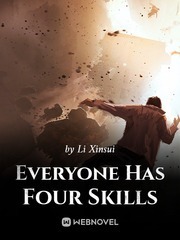Chapter 108 Tank Battle
At this time, most of the German army adhered to the combat principle of "offensive is the best defense", that is, they were better at attacking than defending, and even showed some disdain for absolute defense.
To be precise, what they advocate is "dynamic defense", that is, to deploy mechanized troops on the second line, and attack from whichever direction the enemy breaks through to close the loophole.
Admiral Kleist also made similar preparations.
In order to prevent the Soviet army from breaking out, General Kleist left an armored regiment outside Kyiv.
This armored regiment is the 11th armored regiment belonging to the 3rd Motorized Army. It has two tank battalions with a total of 93 tanks. These two tank battalions are deployed in the west and south of Kyiv respectively.
It makes sense to do so, because north of Kyiv is the German 17th Army, and the bridge over the Dnieper River has been blown up by the Soviet army, and further north is the German Central Army, which means it is basically impossible to break through from this direction .
The west is also unlikely, because that is the hinterland of the German army.
German commander Eberhard divided the troops into two, one of which was deployed in the west, because once the Soviet army broke through, the tank battalion in the west would be able to flank the enemy with the tank battalion deployed in the south.
To Colonel Eberhard's surprise, the Soviet army's breakout direction happened to be west.
"West? Why is it southwest?" Colonel Eberhard couldn't help being stunned when he received the information, but he immediately ordered: "Order the first battalion to prepare for battle, and the second battalion will immediately reinforce the first battalion!"
"Yes, Colonel!"
But before the messengers could convey the order, the battle had already begun.
Admiral Kirponos has information about the German armored forces, so the siege of the Soviet army began with the annihilation of the 11th Armored Regiment.
This made General Kirponos a little nervous, because in previous battles, the Soviet and German tank units had faced each other, and there was a big gap in the number of tanks between the two sides...Budyonny led a mechanized army hoping to break through a German armored regiment defense.
In terms of the number of tanks alone, a mechanized corps of the Soviet army has nearly a thousand tanks, while an armored regiment of the German army has only about 100 tanks.
But that's not the case.
Because the tank regiments of the German army are not just tank regiments, they also have aircraft, artillery, and infantry, and they coordinate with each other like a fish in water.
The attack of the Soviet mechanized troops was a shout and then a swarm of bees.
The German army did not choose to fight the Soviet army head-on... This is what the Soviet army wanted.
The German army retreated under the cover of air force, artillery and infantry.
There are only two words to say "retreat", but it is not so simple on the battlefield: shells poured into the Soviet tank group in pieces, and Stuka bombers flew overhead one after another with a roar. Dive down, the huge Soviet tank group was beaten helplessly, and there were signs of chaos.
Budyonny ordered the troops to speed up.
This order may be correct, because as long as it is entwined with enemy tanks, the opponent's artillery and air power advantages will not be reflected.
But... waiting for the Soviet tanks in front are patches of landmines.
That is to say, the Soviet mechanized army had already suffered heavy losses before seeing the German tanks.
and other Soviet tanks finally saw German tanks after being bombed, running through minefields, and coupled with helpless mechanical failures.
It's just that the German tanks are not on the front but on the two wings.
In order to avoid being surrounded by the German army, the Soviet army could only separate two troops to fight separately, but the German army continued to fight against the Soviet tanks with the high mobility of its tanks
The German tanks communicated well with each other, and they could divide their troops flexibly and sometimes concentrate them. While bombing and bombing the pursuing Soviet tanks with Stukas, they formed a local force advantage to encircle and wipe out the scattered Soviet tanks.
On the contrary, the Soviet tanks were running around like headless flies because of lack of communication and no unified command.
The result was that more than a thousand tanks fought against more than a hundred German tanks. Not only did they fail to win, but they lost nearly half of the tanks and returned home.
Now, it is also an armored regiment to deal with the Germans, but the Soviet army has only one mechanized army that is not fully formed, and the entire army has only more than 500 tanks.
Admiral Kirponos again had to start with tank warfare.
The reason is simple. If the armored regiment left by the Germans near Kyiv is not wiped out, they are likely to use its high mobility to become a nightmare for the Soviet 9th Army.
Based on previous experience, although these 500 tanks still have an advantage in numbers, they are not enough for the German army to hold their teeth.
So, from the moment the battle started, Admiral Kirponos has been guarding the radio station in fear.
The sound of guns and guns on the front line has become one, and then mixed with the sound of tank tracks, flames and gunpowder smoke... A tank battle between the Soviet Union and Germany started again.
Shuerka and others have jumped out of the car and followed the tank.
On the one hand, this is because the tank needs infantry cover and coordination; on the other hand, the battlefield is full of shells. At this time, going forward by car is undoubtedly the target of the enemy.
"Forward!" The battalion commander, Captain Venyakov, waved his pistol and shouted at the soldiers: "Follow the tank and use the tank to hide yourself!"
This is the result of the training of the 9th Army during this period of time... The battles of the Soviet Army were not fought in this way before. In the past, infantry was infantry, and tanks were tanks. The only effective coordination between infantry and tanks may be to use tracer bullets to indicate the target of attack for tanks. and directions.
Now it's completely different:
The commander waved the signal flag at the back, and then all the tanks knew what to do... Of course, the information was passed into the tank by the soldiers lying on the rear armor of the tank through the phone.
The Soviet soldiers also nicknamed these followers "followers".
This nickname really seems to be the case, because their task is to lie tightly or follow behind the tank without falling for a moment.
No way... Most of the Soviet soldiers are uneducated and rough people, so their nicknames are usually ugly, just like Shulka's nickname is "Escape Hero".
Followers make the coordination between tanks and infantry much easier, because they can tell the tank crew some information intuitively from the outside:
"You're driving too fast, wait for them (infantry)!"
"My God, you are about to collide with the tank next to you, go right, go right!"
…
But of course, there are also followers who will command blindly. After the battle, Shulka heard a tank crew complain, and a follower called on the phone: "Hey! There is a plane on the front left, why don't you shoot it down?! "
(end of this chapter)
RECENTLY UPDATES







